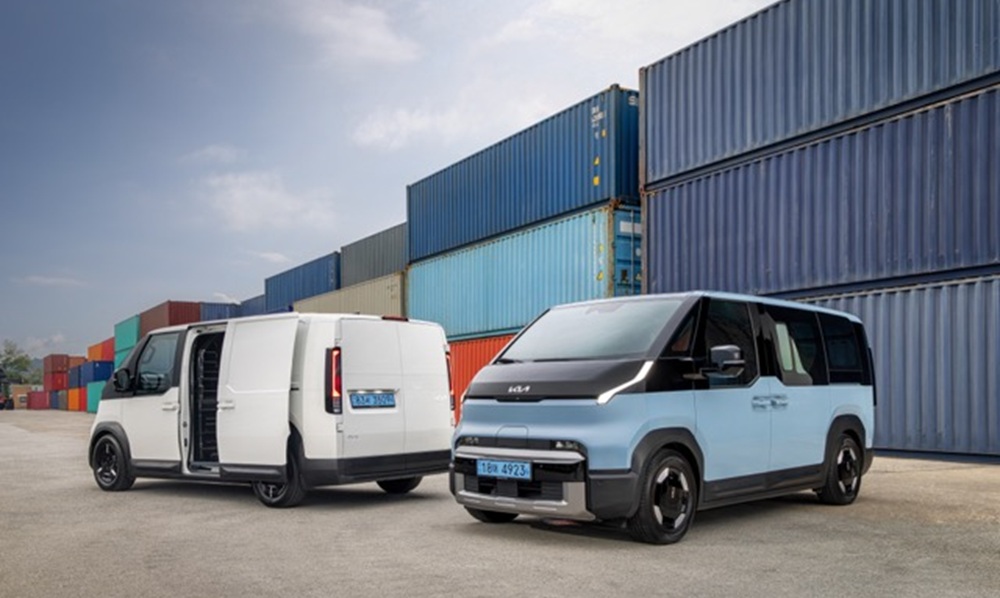Dubai is set to join the ranks of global cities such as London and New York with the introduction of a new “iconic” taxi — the Kia PV5, a 100% electric, purpose-built vehicle (PBV) that blends cutting-edge design with local ambition.
Unveiled at GITEX Global 2025, the PV5 represents the first phase of Dubai Taxi Company’s (DTC) next-generation electrification strategy, which will see the new taxis hit the road at Dubai International Airport (DXB) in the first quarter of 2026, before expanding to other parts of the city.
“Its interior is entirely designed by DTC and will be part of the company’s fleet at Dubai International (DXB) in the first quarter of next year and then rolled out to other areas of the city,” Mansoor Rahma Alfalasi, CEO, Dubai Taxi Company told Khaleej Times during the tech show.
Designed exclusively for DTC, the PV5’s cabin and user interface have been tailored to reflect the company’s three decades of experience in fleet operations, reported Khaleej Times.
The taxi features six built-in cameras, a spacious 1,100-litre luggage compartment, and full accessibility for people of determination, making it one of the most advanced public vehicles ever introduced in the city.
The report suggested that DTC has been inspired by the iconic designs of London’s black cabs and New York’s yellow taxi fleet. Effectively, the introduction of the PV5 is more than a fleet upgrade it’s the creation of a new mobility identity for the city. As Alfalasi put it, “Nowhere else in the world would such a taxi be found, especially at airports.”
“It is a 100 per cent electric car and is equipped with state-of-the-art technology. Everything is built-in and it can carry people of determination (PoDs). In the last three decades, all the knowledge that DTC has, it brought all of it into this car.”
PV5: The Platform Behind the Vehicle
The Kia PV5 has been designed not just a taxi but as the cornerstone of Kia’s Purpose-Built Vehicle (PBV) strategy, a new modular, software-defined platform designed for fleets, logistics, and shared mobility.
During a recent behind-the-scenes look in Korea, Kia executives told T&FME that the PV5 as “a movement rather than a model.” Built on Kia’s eS skateboard EV platform, the PV5’s body can be configured into multiple forms — a van, a people mover, or a delivery unit — through a modular “Lego-like” assembly system.
Seok Ha (Scott) Ju, Head of MSV Project Group 3, said: “From the early stages, it was created with customers, listening, adapting, and evolving in real time. More than 120 global clients reviewed designs, suggested features, and saw their ideas reflected in the vehicle.”
View this post on Instagram
That co-creation process led to several real-world innovations. The front bumper is split into three sections for easy maintenance, seat materials are designed for heavy-use environments, and Kia even collaborated with Uber to develop a wheelchair-accessible variant — a capability directly aligned with DTC’s accessibility mission.
Designed for Efficiency, Built for Business
Engineered with a loading height of just 419mm and up to 4.5 cubic metres of cargo capacity, the PV5 is optimised for both passenger comfort and operational efficiency. The vehicle’s software platform, built on Android Automotive OS, allows customisation for fleet operators — from refrigeration units and payment systems to telematics dashboards and route planning apps.
Kia’s Sang Dae Kim, Head of PBV Business Division, said: “With the PV5, we can glimpse the future, experiencing how mobility can be redefined for businesses and services. It’s designed to eliminate the compromises of van-based platforms and focus purely on durability, usability, safety, and excellent TCO.”
This focus on total cost of ownership makes the PV5 a potentially desirable choice for fleet operators such as DTC, where uptime, serviceability, and passenger experience are critical performance metrics.
DTC’s Fleet Evolution and Autonomous Future
DTC currently operates around 6,200 vehicles, including pink taxis for women and families, accessible taxis for people of determination, and more than 600 limousines — commanding a 45% market share in Dubai’s taxi sector.
While the company has not yet revealed how many PV5 units will join its fleet, Alfalasi confirmed it will be a “good number” and hinted at future upgrades.
“The only missing thing in this car is that it is not autonomous. But of course, this will be the next thing,” he said, noting that Kia is currently studying autonomous functionality for the PV5 platform.
View this post on Instagram
The move aligns with Dubai’s Smart Mobility Strategy, which targets 25% autonomous transport by 2030.
The launch of the PV5 taxi lets Dubai create its own globally recognised cab identity, a modern complement to London’s black cabs and New York’s yellow taxis. Beyond the symbolism, it also marks a tangible step in the UAE’s Net Zero 2050 roadmap and reinforces DTC’s commitment to electrification, accessibility, and innovation.
As Kia continues to roll out its EV5 SUV and PV5 PBV platforms worldwide, DTC’s adoption is blurring the lines between public transport, fleet efficiency and smart mobility.



